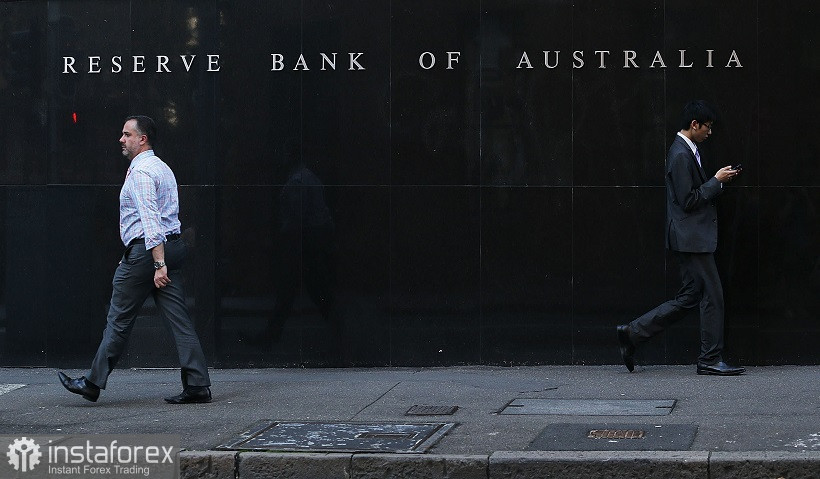The Australian dollar paired with the US currency has been within the northern trend since May 12, after the Aussie hit a two-year low of 0.6830. Starting from this target, the AUD/USD pair has grown by more than 400 points in almost a month. On Friday, traders came close to the resistance level of 0.7290 - at this price point, the upper line of the Bollinger Bands indicator coincides with the lower boundary of the Kumo cloud on the daily chart. But the buyers of the pair could not hold their positions - at the end of Friday's trading, the price fell to the base of the 72nd figure.
In general, regular southern pullbacks allow traders to open longs at a more favorable price. For example, Friday's price decline is gradually offset by today's growth of AUD/USD. The Aussie is strengthening its position against the backdrop of a decline in the US dollar index, as well as due to increased hawkish expectations about the next steps of the Reserve Bank of Australia. Tomorrow, June 7, the RBA will announce the results of its next meeting. On the eve of this event, interest in Aussie is growing, taking into account the forecasts of most experts.

So, according to many analysts, the Australian regulator will raise the interest rate by 25 basis points tomorrow after a 25-point increase at the previous meeting. This is a basic scenario that has already been partially played out by traders. At the same time, 11 economists surveyed by Reuters (out of 35) expect an increase of 40 basis points, that is, to 0.75%. This level of rate was before the coronavirus pandemic.
The previous four-week rise in the price of AUD/USD was due not only to the weakening of the greenback but also to the strengthening of the Aussie, which reacted to the hawkish rhetoric of the head of the RBA Philip Lowe, and other representatives of the Central Bank. Therefore, the very fact of raising the rate by 25 points is unlikely to provoke strong volatility for the pair. All traders' attention will be focused on the text of the accompanying statement and the rhetoric of the head of the Central Bank. The main intrigue lies in the next steps of the Reserve Bank. No one doubts that the RBA will continue to tighten the parameters of monetary policy. The only question is - at what pace.
The most common version is that the Australian regulator will act smoothly, but consistently. By the end of the year, the RBA may raise the rate by another 65 points. This scenario can also be called a baseline, that is, any deviation from this "backbone" line will provoke increased volatility for the AUD/USD pair. For example, if Lowe declares the need for a pause after several rounds of increases (following the example of the Fed - in the minutes of the May meeting, the members of the Federal Reserve did not rule out such an option after increasing the rate by another 100 points).
However, in my opinion, Philip Lowe may deviate from the basic forecast scenario towards its tightening. It should be recalled here that, according to the minutes of the last RBA meeting, there were three scenarios "on the table" for the members of the regulator in May. The first is a rate increase of 15 basis points, the second - by 25 points, and the third - by 40. The central bank chose the middle option (although most experts expected a 15-point increase). The option of a 40-point increase was largely postponed as a last resort - if inflation continues to increase at an accelerated pace. At the same time, recent inflation reports indicate an increase in price pressure. In particular, the consumer price index rose to 2.1% in quarterly terms, with a growth forecast of up to 1.7%. On an annualized basis, the inflation indicator jumped to 5.1% with a growth forecast of up to 4.6%. That is, the indicators have approached 20-year highs.
Already after the May meeting of the RBA, data on salaries were released. They were surprisingly strong. In the 12 months preceding March 2022, nominal wage growth in the country amounted to 2.4%. This is the strongest growth rate (year-on-year) since December 2018. And although wages have not yet "caught up" with inflation, the dynamics itself is positive. According to the Australian Bureau of Statistics, the annual rate of wage growth has increased in each of the last five quarters after reaching the minimum mark (1.4%) in the 4th quarter of 2020.
It should also be recalled that in May, the RBA quite sharply revised upward its inflation forecast. According to Central Bank economists, core inflation may reach 4.6% in December. This forecast exceeds the previous (February) estimate by two percentage points at once. Almost 5% inflation is significantly higher than the target level (2-3%) The Reserve Bank, which suggests that the regulator will continue to tighten monetary policy.
Thus, at the moment, there are all prerequisites for strengthening the hawkish mood of the RBA. If Philip Lowe deviates from the baseline scenario towards tightening (which is very likely), the AUD/USD pair will receive an impulse for further development of the northern trend. The main targets of the upward movement are the 0.7290 mark (the upper line of the Bollinger Bands indicator coincides with the lower boundary of the Kumo cloud on D1) and 0.7350 (the upper boundary of the Kumo cloud on the same timeframe).





















